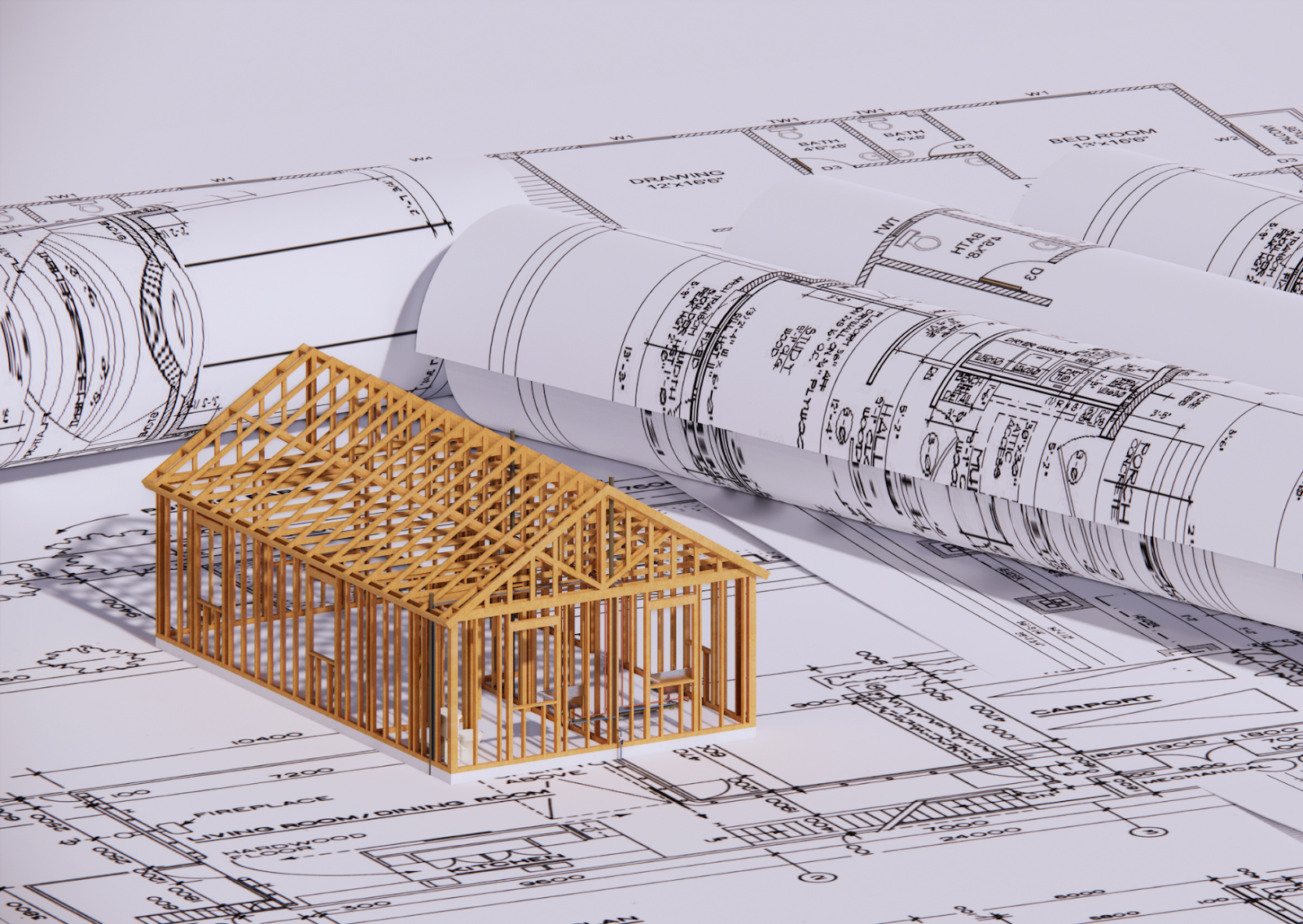Across every job site and planning table, the collaboration between architecture and engineering is more important than ever. As a team, we’ve seen how innovative technology, expert design, and the hard work of skilled workers come together to shape projects that not only meet but exceed expectations. This process goes beyond blueprints—it’s about developing solutions that are safe, efficient, and tailored to the real-world needs of people and communities.
Whether the goal is a multi-unit development or a custom commercial facility, the success of a build depends on how well design and engineering merge into a single, streamlined approach. In this article, we’ll explore how these disciplines support each other from concept to completion—and why that matters for every type of project.
What Is the Relationship Between Architecture and Engineering in the Construction Process?
When we talk about architecture and engineering, we’re referring to two deeply interconnected disciplines that are central to any construction process. Architecture provides the visual and functional blueprint—how a structure should look and serve its occupants. Engineering, on the other hand, brings that vision into the physical world through scientific and structural support.
Modern projects depend on this relationship. A great building design may look impressive on paper, but without structural integrity, it won’t stand. Likewise, a perfectly engineered building without thoughtful design can fail to meet the real needs of its users. This synergy ensures building systems are functional, durable, and safe.
How Do Architectural Engineers Bridge the Gap Between Design and Structure?

Architectural engineers are uniquely positioned in the built environment. They understand both the aesthetics of design and the science behind construction. These professionals manage the integration of mechanical systems, electrical, and plumbing elements into the architectural layout.
Their expertise covers engineering principles and architectural design, making them key players in creating structures that are both beautiful and technically sound. MID Construction Group, for example, leverages experienced architectural engineers to deliver projects that respect both form and function.
What Roles Do Different Engineering Occupations Play in Building Projects?
Every large-scale project requires specialists from various engineering occupations. A civil engineering expert ensures structural soundness. Mechanical and electrical engineers focus on internal systems such as HVAC and power distribution. These roles work in tandem with architects to ensure everything fits into the intended interior layout.
Each of these occupations is part of a bigger puzzle. Their knowledge of engineering systems, materials, and equipment ensures the construction moves forward safely and efficiently.
Why Is Coordination Between Architects and Engineers Essential for Safety and Efficiency?
Clear planning and communication between architects and engineers are essential. This coordination avoids design clashes and ensures safety standards are met. For example, a steel beam necessary for structure should not interfere with the ventilation layout or interior lighting plan.
At MID Construction Group, tight coordination across disciplines helps manage costs and reduce errors during the construction process, resulting in efficient completion of the project.
How Do Engineering Principles Influence Architectural Design?
Good design starts with an understanding of engineering principles. These principles influence the choice of materials, the layout of structures, and the placement of essential components like ventilation or electrical wiring.
Designs shaped by real-world constraints often result in smarter, more functional spaces. An awareness of load-bearing structures, wind resistance, and thermal efficiency informs smarter architectural design decisions.
What Are the Key Differences Between Civil Engineering and Other Disciplines?
Civil engineering stands out because it deals primarily with infrastructure—roads, bridges, and foundational systems. However, it overlaps with other engineering disciplines, especially in urban building projects.
Unlike mechanical or electrical fields that focus on internal systems, civil engineers shape the external and structural systems of a project. Their responsibilities often begin at site development and extend through to completion.
How Do Mechanical Systems and Electrical Equipment Impact Interior Facilities?

The integration of mechanical systems and electrical equipment impacts more than comfort—it affects the entire interior experience. Things like air flow, temperature control, and lighting shape how people feel inside a space.
An efficient building relies on thoughtful placement of these systems. A poorly planned HVAC layout can increase costs and reduce comfort. That’s why smart integration is crucial, and MID Construction Group takes this seriously in every project.
What Educational Pathways Lead to Careers in Architecture and Engineering?
Becoming a professional in this field usually begins with a bachelor’s degree in either architecture or engineering. Many go on to pursue a master’s degree, depending on the specific types of jobs they’re targeting.
University programs include a mix of courses on engineering principles, architectural design, and technical skills. These programs lay the foundation for more advanced work and help future professionals enter engineering occupations or architectural firms.
How Do Students Gain the Knowledge and Skills Needed to Enter These Fields?
Through a combination of classroom education, hands-on training, and collaborative projects, students build the expertise necessary to thrive. Design studios, lab work, and internships provide real-world applications of theory.
Many undergraduate students also gain experience by working in construction firms during their studies, preparing them for graduation and entry-level jobs. This training ensures that they’re ready to create and construct in the real world.
What Is the Role of a Professional Engineer in Project Planning and Execution?

A professional engineer brings a legal and technical authority to projects. They review designs, sign off on technical drawings, and ensure compliance with local codes. Their role in planning involves risk assessment, cost estimation, and equipment selection.
Firms like MID Construction Group rely on the insight of licensed professionals to drive decisions and solve problems during the construction process.
How Do Employers Evaluate Candidates for Engineering and Architecture Jobs?
Employers look for a mix of formal education, real-world experience, and technical proficiency. A solid degree, preferably from a reputable university, along with experience in research or internships, gives candidates a competitive edge.
Some employers prefer professionals who have maintained consistent focus within their field over five years or more, especially for leadership roles. Licensing, such as becoming a professional engineer, also increases job opportunities.
How Do Architecture and Engineering Adapt to Serve Specific Types of Projects?
Whether working on commercial facilities, residential buildings, or infrastructure, architecture and engineering must adapt. Factors like climate, purpose, and budget influence everything from building systems to material choice.
Each project type may require different techniques, and the success lies in adjusting the design, systems, and workflows accordingly. Firms that offer complete services in-house—like MID Construction Group—can handle this flexibility better, thanks to tightly integrated teams.
Ready to See Your Vision Built with Precision and Purpose?
If you’re planning to construct a new home, office, or commercial space, it’s time to work with a team that knows how to bring both form and function to life. Choose a partner that understands the full scope of architecture and engineering, from early planning to project completion.
Whether you’re hiring architects, engineering specialists, or full-service firms like MID Construction Group, make sure the team understands how to balance design creativity with engineering precision. The right expertise can help you create smarter spaces and build lasting value.
Contact a qualified provider today to start planning your next successful build.
Final Thoughts
At MID Construction Group, we believe in the power of collaboration between design and science. Our team of licensed engineers, skilled designers, and project managers work side-by-side to turn your ideas into structures that last. Whether it’s a sleek commercial facility or a complex residential build, we bring deep experience, technical know-how, and a passion for quality to every phase of the construction process.
We’re proud to help shape spaces that are as beautiful as they are functional—and we’d love to help you do the same.
Works Cited
-
American Society of Civil Engineers. “What Is Civil Engineering?” ASCE, https://www.asce.org/what-is-civil-engineering. Accessed 30 May 2025.
-
National Council of Architectural Registration Boards. “What Is an Architect?” NCARB, https://www.ncarb.org/Become-Architect/What-Is-Architect. Accessed 30 May 2025.
-
Bureau of Labor Statistics. “Architecture and Engineering Occupations.” U.S. Department of Labor, https://www.bls.gov/ooh/architecture-and-engineering/home.htm. Accessed 30 May 2025.
-
Engineering.com. “How Engineering Disciplines Work Together.” Engineering.com, https://www.engineering.com/story/how-engineering-disciplines-work-together. Accessed 30 May 2025.
-
National Society of Professional Engineers. “Why Get Licensed?” NSPE, https://www.nspe.org/resources/licensure/why-get-licensed. Accessed 30 May 2025.
Frequently Asked Questions
1. What is the difference between architecture and engineering in construction?
Architecture focuses on the visual design, layout, and functionality of a space, while engineering ensures that the structure is safe, functional, and capable of being built using science and technical systems.
2. What do architectural engineers do?
Architectural engineers combine design knowledge with engineering skills to integrate mechanical systems, electrical, and plumbing into the layout of a building, making sure it looks good and works efficiently.
3. Why is collaboration between architects and engineers important?
Collaboration ensures that safety, functionality, and aesthetics are achieved in every project. Engineers provide technical insights while architects focus on usability and form.
4. What roles do engineering occupations play in building design?
Various engineering occupations like civil, mechanical, and electrical engineers contribute specialized knowledge to ensure that buildings meet code, function well, and last.
5. How do engineering principles affect architectural design?
Engineering principles influence material selection, structural stability, and building systems, which guide architects in making informed design decisions.





